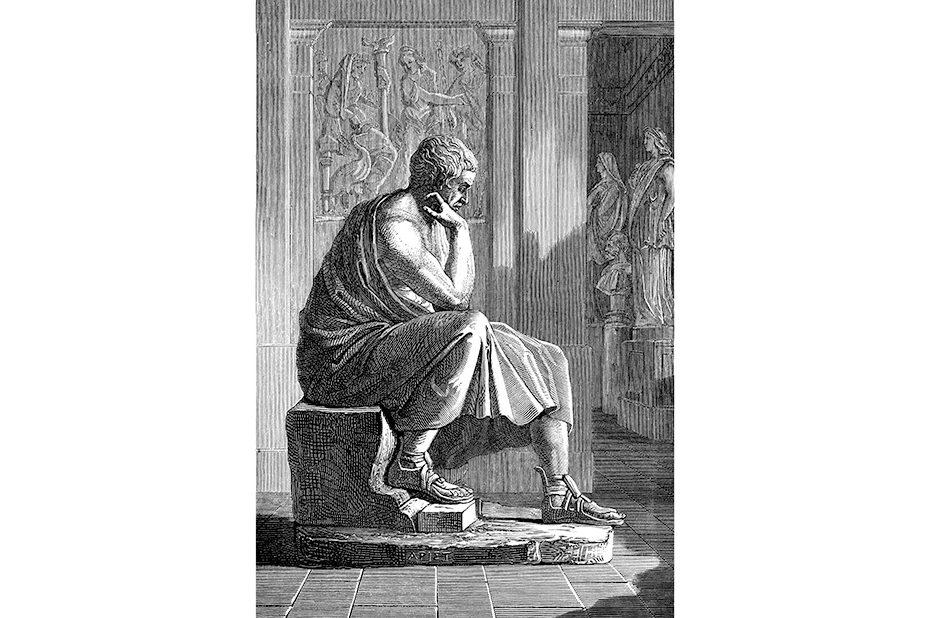In 2020, an American pilot and daredevil named “Mad Mike” Hughes launched himself in a homemade steam-powered rocket, hoping to achieve enough altitude to prove to himself that the Earth was flat. Unfortunately, the rocket crashed and Mad Mike was no more. “I’m not going to take anyone else’s word for it, or NASA, or especially Elon Musk with SpaceX,” he had once explained in an interview. “I’m going to build my own rocket right here and I’m going to see it with my own eyes what shape this world we live on is.” In this way he became a martyr to the modern conspiracy theorist’s mantra: “Do your own research!”
When people who claim that the Earth is flat, or that Covid didn’t exist, or that the moon landings were faked (all these crank opinions go together, along with, inevitably, vicious antisemitism) say they have done their own research, of course, they usually mean they have done zero research but have instead watched hundreds of hours of other conspiracy theorists’ videos on YouTube. It is at least to the credit of one of those YouTubers, Bob Knodel, that he spent $20,000 on a laser gyroscope which he expected would show that the Earth does not spin. When, instead, he got the correct result, he later explained ingeniously: “We started looking for ways to disprove it was actually registering the motion of the Earth.”
The distrust of actual research, of “elite” science, is not a peculiarly postmodern phenomenon. It was also promulgated by the notorious English socialist and quack Samuel Birley Rowbotham, whose invented anti-discipline of “zetetic astronomy” made him famous as a Flat Earther in the nineteenth century, before he went on to poison people (including one of his own children) with phosphorus cures. “Rowbotham urged people to carry out experiments,” James Hannam writes in this splendid book, The Globe: How the Earth Became Round, “while explaining what the results would be for those without the inclination to perform them for themselves.” How helpful. Once in Plymouth, challenged as to why only the top of a distant lighthouse could be seen if the rest weren’t obscured by the curvature of the Earth, Rowbotham simply denied the evidence of everyone’s eyes and said he could see all of it.
We do not meet modern Flat Earthers until quite late on in The Globe, which aims mainly to dismantle “the conflict theory” — the idea that a battle between science and religious literalism prevented people accepting the roundness of the Earth well into the fifteenth century. “The myth that everyone thought the Earth was flat until Columbus proved otherwise was taught as a fact from nursery to university for much of the twentieth century,” Hannam laments, and he sets out with great élan to disprove “the fiction of medieval stupidity and superstition.”
After a colorful tour through ancient Babylonian, Egyptian and Persian cosmologies, we arrive at the Greeks, who at last began to figure things out, starting with Anaximander’s revolutionary thought that the Earth was a solid object just hanging in space. Eventually it was Aristotle and Eratosthenes who proved that the Earth was (more or less) spherical.
The spread of truth was slow but inevitable, as Hannam’s scholarly survey shows. The great Indian astronomers had adopted the Aristotelian view by the fifth century CE, while Christian literalists were still defending flatness. St. Augustine acknowledged the pagan theory but suspended judgment. Thanks to the great Jewish scholar Maimonides and English scholar Venerable Bede, however, the matter was essentially done and dusted by the eighth century. As Hannam concludes, rather thrillingly: “The truth is that, after AD 800, we don’t know of anyone in western Europe with a modicum of literacy who didn’t think that the Earth is spherical.”
What, though, about the illiterate masses? They, too, soon knew what was what, Hannam argues persuasively. Twelfth-century French troubadours, for example, minced around singing that the Earth was round like an apple; and English kings being crowned since at least Harold II — including Charles III — have been ceremoniously presented with an orb, not a disc, representing the planet. In short, there was never any dark middle age of Flat Earth superstition suddenly dispelled by Columbus. (Only in China did Flat Earthism persist for much longer, until their Jesuit court astronomers dropped the science).
The Columbus canard, Hannam shows, seems to have been invented by the American writer Washington Irving in his bestselling 1828 biography of the explorer. Meanwhile Columbus himself, after his third voyage, argued that the Earth was shaped like a pear, with a giant western protuberance “like a woman’s nipple” that he accidentally sailed up, which is what messed up his nonsensical observations of the Pole Star. In the annals of excuses for failure, that one is even better than a faulty laser gyroscope.
This article was originally published in The Spectator’s UK magazine. Subscribe to the World edition here.

























